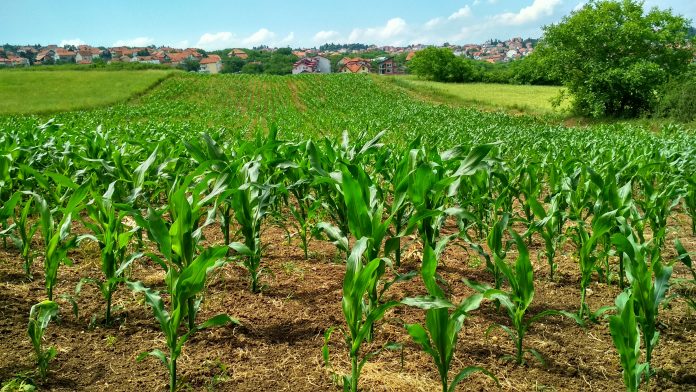It can be a daunting and nerve-wracking experience to be responsible for a successful farm; after all, the livelihood of you and your family depends on it. As a farmer, learning about crop insurance and risk management is one crucial step in that success – taking proactive steps to protect against natural disasters or other risks that might cause economic harm is essential for any thriving operation.
In this blog post, we’ll delve into what exactly crop insurance is and cover some key considerations when choosing an appropriate policy. With the right information at hand, farmers can ensure their investments are covered regardless of circumstances outside their control. Read on to learn more!
Overview of Crop Insurance and Risk Management for Farmers
Farmers face a plethora of risks that can impact their crop production, from natural disasters to changes in market demand. Crop insurance and risk management strategies are crucial tools that farmers can utilize to mitigate these risks and protect their livelihoods.
Crop insurance provides financial protection against yield loss due to natural disasters, while risk management strategies, such as diversification of crops and markets, can help farmers spread their risk and increase their chances of success.
By proactively managing risks, farmers can safeguard their businesses and ensure they can continue to provide food and resources for their communities.
Benefits of Investing in Crop Insurance
When it comes to farming, numerous unpredictable variables can make or break a successful season. Weather, pests, and disease are just a few potential threats that can devastate a crop.
This is where crop insurance comes in handy. Investing in crop insurance allows farmers to protect their hard work and potential profits in case of unexpected losses. It provides a sense of security and peace of mind, which is essential for farmers to continue their operations.
With various options and coverage levels available, farmers can choose the plan that best suits their needs. Overall, investing in crop insurance can prove to be a smart and valuable decision for any farmer looking to safeguard their livelihood and investments.
Different Types of Crop Insurance Available
When it comes to crop insurance, there are several different types available to help protect farmers from unexpected losses. The most common type is called multiple peril crop insurance, which covers a wide range of risks such as weather events, disease, and pests.
Another popular type is revenue protection, which pays out based on a percentage of the expected crop revenue instead of just yield. There are also specialized types of insurance for specific crops, such as livestock or nursery crops.
Choosing the right type of crop insurance can be a complex decision, but it’s an important one for farmers to make in order to manage risk and protect their livelihoods.
Tips on Choosing the Right Crop Insurance Policy
As a farmer, choosing the right crop insurance policy can be daunting. You want to ensure that you’re protected in the event of a disaster, but you also don’t want to pay more than you need to.
There are several things to consider when choosing a policy, including the level of coverage, the type of policy, and the options available to you.
It’s important to assess your individual needs and take the time to research and compare policies before making a decision. By choosing the right crop insurance policy, you can have peace of mind knowing that you’ll be protected in the event of unforeseen circumstances.
How to Receive Maximum Benefits from Your Crop Insurance Policy
As a farmer, you always hope for a bountiful harvest, but sometimes unforeseen circumstances, such as weather events or crop disease, can result in lower yields than expected. This is where crop insurance comes in.
Whether you are new to crop insurance or have been using it for years, it’s important to ensure that you are receiving its full benefits. Understanding the terms and coverage of your policy, properly documenting any losses, and timely filing claims are all essential steps to maximizing your crop insurance benefits.
By taking these steps, you can have peace of mind knowing that you have protection in the event of unforeseen losses and that you will be able to recover as much of your investment as possible.
Best Practices for Risk Management on the Farm
Managing risks is an essential part of farming. By identifying potential hazards and developing a risk management plan, farmers can reduce the likelihood of accidents and minimize the impact of unexpected events.
One of the best practices for risk management on the farm is to conduct a thorough risk assessment. This involves identifying potential hazards such as mechanical equipment failures, animal health issues, or extreme weather events.
Once identified, farmers can make informed decisions about how to mitigate these risks, which may include updating equipment, developing contingency plans for animal illness, or creating an emergency response plan for severe weather.
By taking preventative action and planning for the unexpected, farmers can protect their crops, livestock, and business operations, ultimately leading to a more successful and sustainable farm.
Investing in crop insurance can be a great way for farmers to protect their businesses from the many risks associated with agricultural activities. By understanding the different types of crop insurance available and selecting the right policy to meet their needs, farmers can ensure that they are doing everything possible to reduce their risk exposure. In addition to choosing the right policy, it’s important that farmers also keep up with best practices for risk management on their farms. This includes making sure that equipment is well maintained and periodically inspected, monitoring weather conditions throughout the growing period, and implementing good insect and weed control strategies. It can take some time and effort to ensure your farm is as protected as possible, but by taking these steps you can give yourself some peace of mind in difficult times.














